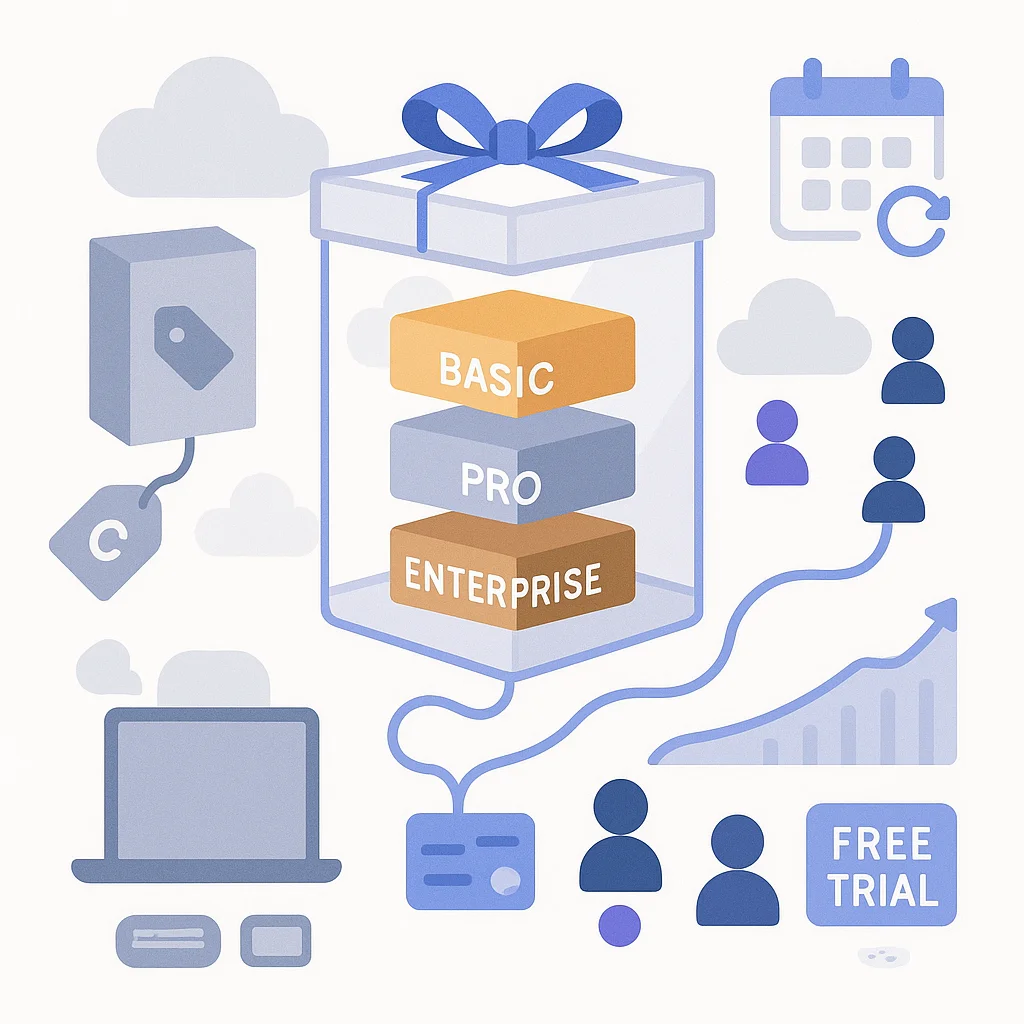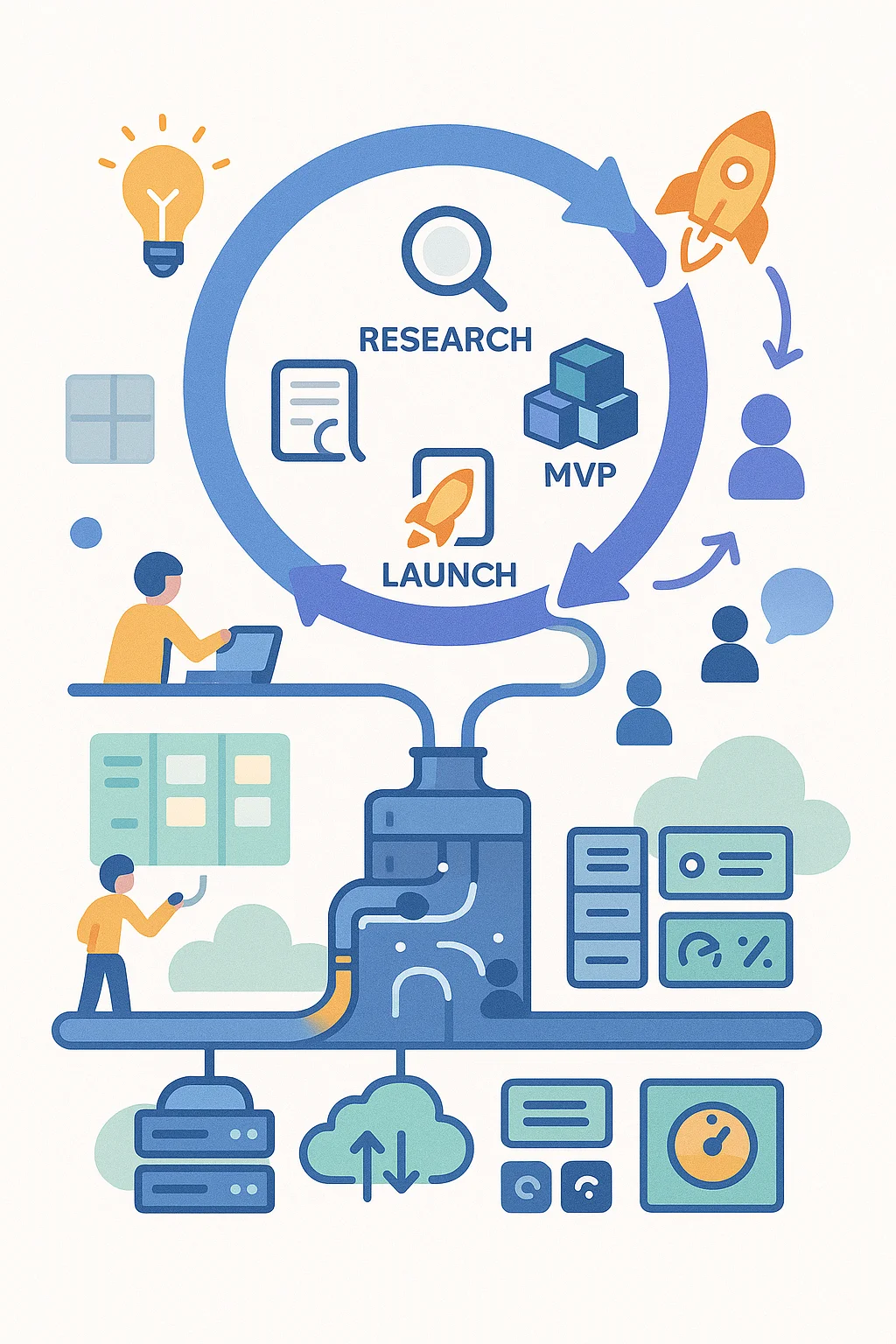What Does Product Mean? Guide (2026)
Explore the definition of a product, from tangible goods to digital services, and how products deliver value to customers.

When you’re a founder or product manager at a young company, the word “product” often means whatever the speaker wants it to mean. Some see it as an application; others see it as a package of features or a revenue model. This fuzziness makes it hard for a small team to make decisions and deliver value. In this article, I’ll answer what does product mean in a startup context. I’ll define the term, introduce a four‑lens framework—outcome, output, market offer and production—and show how it helps teams stay focused on what matters. Most examples draw on subscription‑based software (SaaS), but the ideas apply to hardware, services and hybrids.
What does the product mean?
To answer what a product means, we need to recognise that a product is more than what you sell. Aha!, a widely used product‑management resource, defines a product as the complete experience delivered to a customer. That experience may involve physical goods, software or services and can shift over time. Software used to be bought and installed on discs; today it is often delivered by subscription. This change underscores that the idea of a product evolves with technology and consumer expectations.
A practical way to make sense of a product is to look at it through four lenses:
- Outcome – the benefit or change your customer achieves by using your offer.
- Output – the tangible thing you build: code, features or hardware.
- Market offer – how you package, price and position what you make.
- Production – the processes, people and tools behind development and operations.
These lenses help teams break down a vague idea into parts they can discuss and measure.
Outcome: the benefit users gain

When early teams ask what a product means, they often skip the outcome. Yet the purpose of a product is the result it delivers. Pavel Samsonov of Nielsen Norman Group defines a value proposition as a promise of the value users can expect. He shows how successful products such as Dropbox and Instagram focused on a single clear benefit. A clear outcome makes marketing simpler.
To put outcome thinking into practice, consider metrics. In SaaS, outcomes show up in activation, time‑to‑value and adoption. Userpilot’s 2024‑2025 benchmark, covering 547 SaaS companies, reported that sales‑led firms achieved higher activation (41.6% vs. 34.6%) and shorter time‑to‑value (1 day 11 hours vs. 1 day 12 hours) than product‑led firms. It also found that 80% of companies with activation over 50% used video or animation in onboarding. These numbers underline that focusing on user benefit pays off.
Questions to ask when thinking about outcome:
- What real‑world benefits do users seek?
- How will we know they achieve it (activation, adoption, retention)?
- Is our value proposition framed around the user rather than the technology?
Output: what you build

Output is the deliverable—an app, a feature, a device or a service module. When teams answer what does product mean only through this lens, they risk shipping features that don’t matter. The concept of a minimum viable product (MVP) helps avoid that trap. Cygnis Media’s 2024 guide describes an MVP as a mini version launched with only core features to test demand and meet expectations. Building an MVP forces you to focus on what is essential, release early, gather feedback and iterate.
Questions to ask about output:
- Which features or modules are critical to deliver the desired outcome?
- What will you ship first, and why?
- How do you keep the build lean so you can test assumptions early?
Market offer: how you package and sell

Another part of what a product means is how you bring it to market. DealHub defines a SaaS product as cloud‑hosted software provided on a subscription basis. Common traits include accessibility from any device, centralised hosting, automatic updates and scalability. From a business perspective, the subscription model enables recurring revenue and predictable forecasts.
By contrast, software‑as‑a‑product (SaaP) requires you to purchase a licence and host the software yourself; updates often cost extra. Many vendors, including Microsoft and Adobe, have shifted from SaaP to SaaS because customers prefer paying regular fees for always‑current tools. This difference affects how you package features into tiers, offer trials or use usage‑based billing.
Questions to ask about your market offer:
- Who is the buyer, and what pricing makes sense (subscription, licence, freemium)?
- How will you position the product to communicate the outcome it delivers?
- What channels or bundling strategies will you use to reach and keep customers?
Production: how you build and operate

When you wonder what a product means apart from features and pricing, consider production. Production covers the life cycle from concept to launch and later stages. Userpilot describes the product development life cycle as a structured process guiding work from idea to release and distinguishes it from the product life cycle, which extends from launch through maturity and retirement. Stages include market research, idea generation, validation, prototyping, marketing strategy, building an MVP and iterating after launch. Agile practices emphasise releasing small increments, gathering feedback and adjusting.
Production also involves infrastructure. In SaaS, teams rely on cloud platforms that offer elasticity and cost efficiency. Without a scalable foundation, even good features and pricing can falter.
Questions to ask about production:
- How will you gather user feedback during and after development?
- Which processes (scrum, kanban, dual‑track) will you use to organise work?
- How will you measure efficiency and quality (cycle time, defect rate, uptime)?
SaaS context and delivery models
In the world of subscription software, the term takes on a specific meaning. A SaaS product is more than the code; it’s an ongoing service delivered over the internet. Customers gain access rather than ownership. They expect constant availability, continuous updates and simple pricing. This model has changed buyer expectations: the provider manages hosting and updates, lowering adoption barriers. Because revenue is recurring, product teams must keep delivering value rather than chasing one‑off sales. Userpilot found that 79% of SaaS companies use product‑led growth strategies but that sales‑led firms often achieve higher activation and shorter time‑to‑value. The lesson: marketing and onboarding are part of the product, not add‑ons.
Distinguishing SaaS from SaaP clarifies how product definition differs across business models:
- Delivery: SaaS is hosted by the provider and accessed via the internet; SaaP is installed and run by the buyer.
- Ownership: SaaS customers subscribe to access; SaaP customers own a copy and handle updates.
- Maintenance: In SaaS, the vendor maintains servers and pushes updates; in SaaP, customers manage hosting, upgrades and infrastructure.
- Pricing: SaaS uses subscription or usage‑based billing; SaaP charges a one‑time fee plus fees for upgrades.
Thinking through these differences helps you design the market offer and production systems that match your model.
Why does definition matter and how to apply it?
Getting what the product means right has real consequences. Clear definitions help teams communicate. When founders, designers, engineers and marketers use the same language, they can coordinate around a shared outcome instead of pushing conflicting agendas. A common definition also links metrics to purpose. Outcome metrics tell you whether users achieve the intended benefit; output metrics track build progress; market offer metrics measure conversion, revenue and churn; production metrics track efficiency and quality. Without these anchors, teams may chase vanity numbers.
A clear definition prepares you to scale. Early hacks might work for a handful of users but crumble under growth. By thinking about subscription billing, infrastructure, support and compliance from day one, you avoid expensive rewrites.
Putting the framework to work
Here are practical ways to use the four‑lens framework:
- Definition workshop – Bring founders, product managers, designers, engineers and sales together. Ask what the product means for your team. Use the four lenses to map out outcome, output, market offer and production.
- One‑pager – Document the outcome you aim to deliver, the outputs that support it, the pricing and positioning and the approach to development and operations. Keep it brief and revise it as you learn.
- Metrics by lens – Set outcome metrics to measure value delivered, output metrics to track progress, market offer metrics to capture conversion and churn, and production metrics to monitor efficiency and quality.
- Layered roadmap – Start with the outcome: define the user path and value proposition. Then decide which outputs are needed for the next release. Factor in the market offer—pricing, packaging, channels—and plan the production process (sprints, releases, infrastructure).
- Plain communication – When describing work, connect the output to the outcome and explain how it will be delivered and operated. Focus on the benefit rather than the technology.
- Iterate and learn – After launch, review each lens. Did you deliver the intended outcome, ship the right outputs, appeal to buyers and run operations smoothly? Use metrics and feedback to adjust.
Common pitfalls
When teams ignore one of the lenses, things go wrong:
- Feature obsession – Defining the product as “the app” encourages adding features without considering whether they serve the user. Start with the outcome and cut anything that doesn’t support it.
- Untested pricing – Assuming a pricing model without validating whether customers attain the intended outcome often leads to poor adoption. Experiment with tiers, trials and usage‑based plans.
- Neglecting scale – Failing to invest in scalable infrastructure and processes will catch up with you when usage spikes.
- Technology hype – Samsonov warns that selling a product by touting machine learning or artificial intelligence rather than user value distracts from real benefits. Lead with the outcome instead.
Conclusion
So what does product mean for an early‑stage startup? It’s not just the interface you ship. A product is the combination of the outcome your customer experiences, the output you build to enable that outcome, the market offer you wrap around it and the production work that brings it to life and keeps it running. This four‑lens framework gives founders and product leaders a shared language and a set of questions to anchor discussions. It helps you focus on value rather than activity, link metrics to strategy and plan for growth. Far from constraining creativity, this structure frees you to innovate with clarity.
Next time you plan a roadmap or run a retrospective, ask your team what the product means for the work you’re doing. Map it against the four lenses, measure the right things and adjust as you go together.
FAQs
1) What is a product in SaaS?
A SaaS product is software hosted on the provider’s servers and delivered over the internet for a recurring fee. It is defined by the outcome it delivers to users, the software output you build, the market offer (subscription or usage‑based) and the production process that develops and operates it. DealHub highlights features such as centralised hosting, automatic updates and accessibility from any internet‑enabled device.
2) What is considered a product?
A product can be a physical item, a service or software. Aha! describes it as anything—tangible or intangible—that provides value to customers. In a startup, it’s useful to break it into outcome, output, market offer and production.
3) What does product mean in Scrum?
In Scrum, the product is the increment delivered each sprint that matches the Product Owner’s vision. It’s not just the code but the value that increment provides. The Product Owner must articulate the outcome the increment should deliver and ensure the team builds what matters. The four‑lens framework helps you think about outcome, output, market offer and production in each sprint.
4) What is an example of a SaaS product?
Slack is a clear example. It is hosted in the cloud, offered by subscription and accessible from any device. The outcome is improved team communication; the output is the messaging platform; the market offer is subscription tiers (free, standard, plus); and production involves continuous development, hosting and support. Userpilot lists Slack among common SaaS examples.


.avif)










